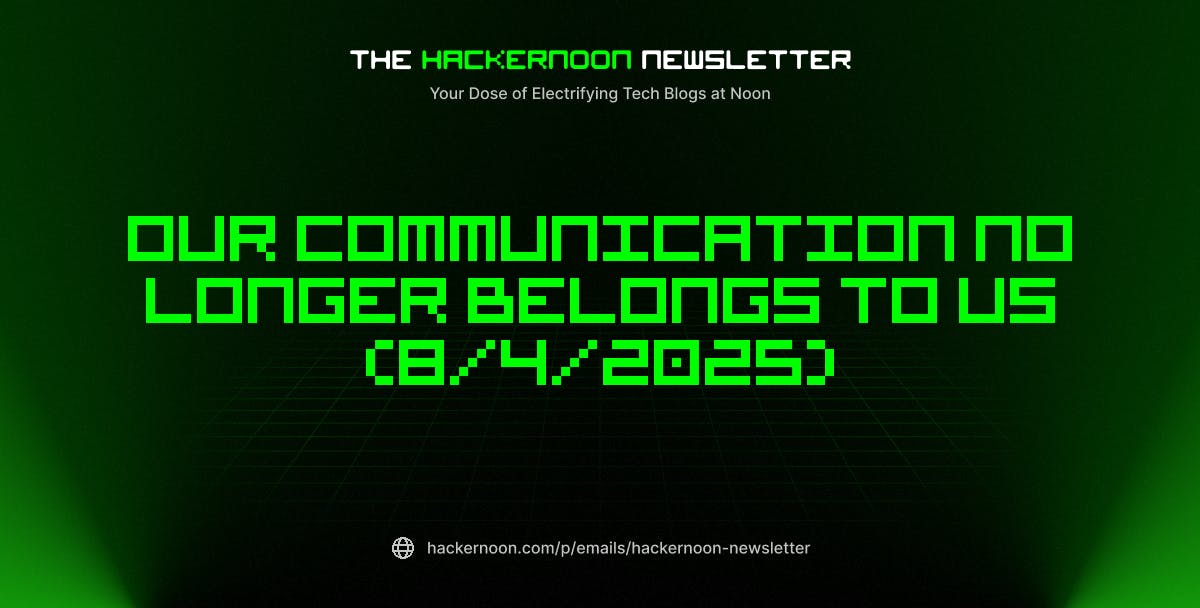Ideas often start as scattered thoughts—scribbled notes, fragmented lists, or mental sparks that fade too quickly. Without structure, even the best ideas can get lost in the chaos.
That’s where AI tools for mind mapping come in.
These tools go beyond simple organization; they help visualize connections, generate new ideas, and refine complex concepts. From brainstorming and project planning to creative workflows, AI can turn unorganized thoughts into structured, actionable insights.
In this blog post, we’ve rounded up 11 of the best AI tools for mind mapping to help connect the dots—and which might leave you drawing blanks. Let’s dig in! ⚒️
Top 11 AI Tools for Mind Mapping for Creativity and Organization
Before diving into each tool, here is a quick snapshot of the 11 best mind mapping tools.
| Tool | Best for | Key features | Pricing |
|---|---|---|---|
| Best for mind mapping with project management Team size: Individuals, mid-market, high-growth companies, large enterprises |
Mind Maps and Whiteboards turn raw ideas into tasks and actions, powered by AI | Free forever; Customizations available for enterprises | |
| Miro | Best for collaborative brainstorming and visual planning Team size: Ideal for teams of any size needing real-time collaboration |
Brainstorm, build product journeys, and plan workflows in real-time | Free plan available; Paid plans start at $10/user/month |
| Lucidchart | Best for creating technical and complex diagrams Team size: Ideal for small to large teams managing technical workflows |
Diagram system architectures, processes, and organizational structures | Free plan available; Paid plans start at $9/month for Individuals |
| SmartDraw | Best for detailed diagrams and CAD-like precision Team size: Ideal for technical teams needing CAD-style diagrams |
Create complex diagrams, CAD-style plans, and technical layouts | Starts at $5/month per user (billed annually) |
| MindMeister | Best for simple, creative mind mapping and real-time collaboration Team size: Ideal for creative teams collaborating in real-time |
Visualize and brainstorm ideas with customizable layouts and team inputs | Free plan available; Paid plans start at $4.50/month for Personal (billed half-yearly) |
| Xmind | Best for structured, creative mind mapping with diverse layouts Team size: Ideal for teams needing diverse diagram options |
Use different diagrams for academic, business, or personal planning | Free plan available; Paid plans start at $15/month for Premium |
| Coggle | Best for freeform mind mapping with easy collaboration Team size: Ideal for teams needing flexibility in structure |
Create flexible maps with drag-and-drop visuals and real-time sharing | Free plan available; Paid plans start at $5/month for Awesome |
| Ayoa | Best for combining mind mapping with task management Team size: Ideal for teams looking to integrate mind mapping with project execution |
Visualize thoughts and track execution with built-in Zoom and accessibility features | Free plan available; Paid plans start at $17/month for Ultimate |
| EdrawMind | Best for AI-powered mind mapping and automatic content generation Team size: Ideal for teams working with AI-powered brainstorming |
Generate content, translate notes, and polish ideas with AI | Free plan available; Paid plans start at $7.90/month for Individual |
| GitMind | Best for visual thinkers who need AI-powered idea organization Team size: Ideal for content creators and project managers |
Organize ideas visually, translate content, and generate documents using AI | Free plan available; Paid plans start at $19/month for Personal |
| Mindomo | Best for flexible mind mapping with offline access Team size: Ideal for users needing offline and real-time collaborative capabilities |
Switch between mind maps, outlines, and Gantt charts across devices | Free plan available; Paid plans start at $5.50/month for Subscription (Desktop, cloud, mobile) |
It is important to select an AI mind mapping software that aligns with your needs and enhances your creativity and productivity.
Here are some key factors to consider:
- AI assistance: Look for features where the AI creates hierarchical mind maps from text, ideas, or images, helping you get started quickly
- Content conversion: Look for tools that can convert documents, articles, or images into mind maps for easier processing
- Collaboration options: Choose a tool that supports real-time collaboration, making teamwork smooth and efficient
- Customization features: Ensure the tool allows for easy styling, color schemes, and layouts to make your mind maps visually appealing
- Task management integration: Select tools that combine mind mapping with task tracking or project management features to keep ideas actionable
- Language support: If you work across regions, choose tools that support translation to keep collaboration smooth
📮 Insight: 11% of our respondents leverage AI primarily for brainstorming and ideation. But what happens to these brilliant ideas afterward? This is where you need an AI-powered whiteboard, like Whiteboards, which helps you instantly turn ideas from the brainstorming session into tasks.
And if you can’t quite explain a concept, simply ask the AI image generator to create a visual based on your prompt. It’s the everything app for work that enables you to ideate, visualize, and execute faster!
🔍 Did You Know? Tony Buzan, the ‘father of mind mapping,’ popularized mind maps in the 1970s, coining the term on the BBC to enhance memory, creativity, and note-taking. Inspired by great thinkers, he combined their techniques with psychology research, later compiling his insights in The Mind Map Book (1995).
Now that we’ve covered what makes a great AI mind mapping tool, let’s look at the best options to bring your ideas to life. 🎯
1. (Best for mind mapping with project management)
, the everything app for work, is one of the best mind mapping software tools available today. It’s designed to bring all your tasks, projects, and ideas into one platform.
Mind Maps: Turn ideas into actionable plans
Whether you’re organizing a project, brainstorming content ideas, or mapping out business strategies, seamlessly integrates into your workflow.

Mind Maps turn scattered notes into structured, actionable plans that fit naturally into your workspace. You can break down complex ideas, visualize concept relationships, and streamline brainstorming sessions—all in one interactive space.
Freeform or structured? You decide.
In Blank Mode, you can brainstorm freely, while Tasks Mode helps you organize and connect tasks visually, bringing clarity to even the most intricate workflows within your project structure. Additionally, ’s Re-Layout feature automatically arranges your mind map, keeping the hierarchy intact while improving readability.
Whiteboards: Visualize and collaborate freely
Mind Maps are just the beginning. Whiteboards take collaboration a step further, allowing you to sketch ideas, link tasks, and develop workflows interactively. This intuitive and flexible canvas integrates with ’s broader feature suite, directly connecting to tasks, docs, and conversations.


What’s more, ’s AI capabilities mean you can generate custom images to see your ideas fleshed out in stunning visuals.!


Embrace total creative freedom with the Blank Mind Map Whiteboard Template. Begin with a clean slate to map out different ideas, brainstorm concepts, and visually organize your thoughts without any predefined structure.
Brain: Let AI power your creative flow


And with Brain, AI-powered suggestions help refine ideas, automate repetitive tasks, and generate structured plans from brainstorming sessions. This integrated AI assistant helps you quickly find answers, build reports, and create content, making the entire process more streamlined and less time-consuming.
For instance, you may start with a structured Mind Map to outline a blog post, use Whiteboards to refine key points visually, and then let Brain expand outlines and create drafting, editing, and publishing tasks.
✨ Bonus: Brain users can choose from multiple external AI models, including GPT-4o and Claude for brainstorming, ideating, and more.
best features
- Convert ideas to actionable tasks: Link your mind maps directly to tasks and documents, turning concepts into executable steps without interruption
- Generate real-time progress updates: Leverage AI to create task summaries and status reports, keeping your mind map aligned with the latest project developments
- Centralize information: Attach relevant documents and conduct discussions within the whiteboard, creating a seamless workflow for all team members
- Automate your workflow: Set up Automations to simplify task management and reduce manual work
- Personalize your workspace: Customize your mind maps with colors, edit connections, and adjust layouts to enhance clarity and ease of use
- Jump into action: Skip the setup and dive straight into planning using the Simple Mind Map Template to hit the ground running, saving time and creating actionable steps right away
limitations
- While offers a wealth of features, new users may require some time to get familiar with its interface
- For very simple use cases, ’s robust feature set may feel more advanced than necessary
pricing
free forever
Best for personal use
Free Free
Key Features:
unlimited
Best for small teams
$7 $10
Everything in Free Forever plus:
business
Best for mid-sized teams
$12 $19
Everything in Unlimited, plus:
enterprise
Best for many large teams
Get a custom demo and see how aligns with your goals.
Everything in Business, plus:
* Prices when billed annually
ratings and reviews
- G2: 4.7/5 (10,000+ reviews)
- Capterra: 4.6/5 (4,000+ reviews)
What are real-life users saying about ?
Briettny Curtner, Project Manager at Utah Valley University, shares how her team uses ’s Whiteboard:
2. Miro (Best for collaborative brainstorming and visual planning)
Miro is a versatile mind mapping tool that helps teams generate ideas, processes, and workflows in real time. Its AI-powered features and mind map templates help organize brainstorming sessions, map out product journeys, and work through design processes.
For professionals managing design projects, Miro can be used to map out wireframes and user journeys, quickly turning creative concepts into visual representations. Additionally, it offers robust security features to protect your team’s ideas and intellectual property.
Miro best features
- Let the AI expand on your ideas, suggesting possible connections or uncovering insights you might have missed
- Access over 300 customizable workflow templates, from product roadmaps to process mapping
- Convert your mind maps into interactive presentations or videos to engage your team during meetings or workshops
- Sync your boards with Google, Microsoft, Adobe, and other tools to pull in data or content for a cohesive project overview
Miro limitations
- There’s a steep learning curve for advanced features, especially with complex processes or connectors
- Difficult to organize and find past boards or work
Miro pricing
- Free
- Starter: $10/month per user
- Business: $20/month per user
- Enterprise: Custom pricing
Miro ratings and reviews
- G2: 4.7/5 (7,400+ reviews)
- Capterra: 4.7/5 (1,600+ reviews)
What are real-life users saying about Miro?
According to a user on G2, Miro could improve board access control:
3. Lucidchart (Best for creating technical and complex diagrams)
Lucidchart is an interactive diagramming tool designed to help you create visually compelling and data-driven diagrams. Describe the needed diagram, and let Lucidchart’s AI automatically generate it based on your input. Edit and enhance it as needed.
The tool brings data and visuals together in a seamless, collaborative environment when working on complex system architecture or business processes. Live data integration ensures your diagrams stay up-to-date, making it easier to create mind maps for organizational structures and technical systems.
Lucidchart best features
- Work together with your team, no matter where they are, with co-authoring, in-editor chat, and collaborative cursors
- Use conditional formatting to change how elements are displayed based on data conditions
- Manage multiple layers within a single diagram to keep things organized and prevent overcrowding
- Easily create Unified Modeling Language (UML) diagrams to visualize systems, processes, or software structures
Lucidchart limitations
- Cannot input wall length in feet and inches and auto-populate to that size, requiring manual adjustment
- Only document creators can hide/unhide content, limiting control for others
Lucidchart pricing
- Free
- Individual: $9/month per user
- Team: $10/month per user
- Enterprise: Custom pricing
Lucidchart ratings and reviews
- G2: 4.5/5 (6,000+ reviews)
- Capterra: 4.5/5 (2,100+ reviews)
What are real-life users saying about Lucidchart?
A reviewer on Capterra highlights Lucidchart’s learning curve:
4. SmartDraw (Best for detailed diagrams and CAD-like precision)
SmartDraw is a mind mapping and diagramming tool designed to handle various types, from simple flowcharts to complex architectural plans.
Its unique integration of computer-aided design (CAD) sets it apart from many other mind mapping tools, making it a great option for teams needing high-level design capabilities alongside simple workflow visualizations.
SmartDraw best features
- Utilize AI to automatically adjust the layout as you brainstorm, ensuring your diagrams stay organized without manual adjustments
- Combine multiple diagrams like flowcharts, org charts, roadmaps, and more into a single whiteboard
- Access 4500+ brainstorming templates and 29,000+ built-in symbols, allowing you to build diagrams that meet your specific needs quickly
- Import data from platforms like AWS, Azure, Jira, or CSV files to automatically generate org charts, flowcharts, or decision trees
SmartDraw limitations
- The line snap feature can be unreliable, often snapping to unintended objects and making adjustments difficult
- Limited document storage on the platform requires users to rely on their cloud storage
SmartDraw pricing
- Individual: $9.95/month per user (billed annually)
- Team: $8.25/month per user (billed annually)
- Site: $5/month per user (billed annually)
SmartDraw ratings and reviews
- G2: 4.6/5 (280+ reviews)
- Capterra: 4.1/5 (110+ reviews)
🔍 Did You Know? The concept of visually organizing ideas dates back centuries. Leonardo da Vinci and other polymaths used diagrammatic thinking similar to mind maps.
5. MindMeister (Best for simple, creative mind mapping and real-time collaboration)
MindMeister is a reliable mind mapping tool that turns ideas into structured, visually appealing maps. It lets you personalize each topic with color, shape, and line style options to make your map visually distinct and aligned with your preferences.
Plus, like MindMeister alternatives, it’s suitable for organizing ideas, brainstorming solo, and collaborating with a team.
MindMeister best features
- Switch between different layouts like mind maps, org charts, or lists within the same canvas
- Edit mind maps from anywhere with MindMeister’s mobile app for iOS and Android
- Format text using simple markdown syntax, allowing for quick and easy edits
MindMeister limitations
- Larger mindmaps become laggy and may crash
- When reopening maps, all topics often expand, making the map look messy and requiring manual cleanup
MindMeister pricing
- Free
- Personal: $4.50/month per user (billed half-yearly)
- Pro: $6.50/month per user (billed half-yearly)
MindMeister ratings and reviews
- G2: 4.2/5 (30+ reviews)
- Capterra: 4.6/5 (290+ reviews)
🧠 Fun Fact: In 2007, MindMeister was launched as the first web-based mind map tool. Since then, it’s helped over 37 million users worldwide generate billions of ideas.
6. Xmind (Best for structured, creative mind mapping with diverse layouts)
Xmind structures ideas and visualizes concepts for efficient visual project management. It offers a variety of mapping structures, making it helpful in organizing research, outlining a project, and mapping out business strategies.
The platform also has structured tools to break down information into clear, connected components, making it easy to handle complex research and educational projects. Additionally, its AI features facilitate curriculum planning, research, and business campaigns.
Xmind best features
- Choose from logic charts, brace maps, fishbone diagrams, timelines, and more layouts to organize ideas in different ways
- Automatically convert brainstorming sessions into actionable task lists, providing a clear starting point for projects
- Use LaTeX commands to support mathematical and chemical equations directly within mind maps
- Conduct post-project evaluations and document lessons learned with AI-assisted summaries
Xmind limitations
- The new SaaS model feels clunky compared to previous versions
- Excessive options complicate the process of creating professional mind map presentations
Xmind pricing
- Free
- Pro: $10/month
- Premium: $15/month per user
- Business: $18/month per user
- Enterprise: Custom pricing
Xmind ratings and reviews
- G2: 4.3/5 (50+ reviews)
- Capterra: 4.5/5 (110+ reviews)
7. Coggle (Best for freeform mind mapping with easy collaboration)
Coggle is a flexible mind mapping tool that visually organizes ideas, processes, and decisions. It offers a free-form canvas where concepts can branch out dynamically, making it useful for brainstorming techniques, flowcharting, and planning.
If you’re handling process visualization, Coggle’s ability to create loops, join branches, and structure ideas without strict templates makes it useful. Automatically format and auto-arrange branches to keep the diagram structured and easy to read.
Coggle best features
- Share diagrams via a private link, allowing others to view or edit them without creating an account
- Drag and drop images directly into diagrams with unlimited image uploads, making it easier to illustrate ideas
- Place standalone notes or images anywhere on the canvas to provide additional context without disrupting the main structure
- Add multiple central topics in one diagram, allowing different concepts to coexist within a single workspace
Coggle limitations
- Lacks features found in Coggle alternatives, such as themes, images, presentation mode, and brainstorming tools
- Difficult to use for presentations, especially with large mind maps; hard to collapse or focus on branches
Coggle pricing
- Free
- Awesome: $5/month per user
- Organization: $8/month per user
- Enterprise: Custom pricing
Coggle ratings and reviews
- G2: Not enough reviews
- Capterra: 4.5/5 (40+ reviews)
What are real-life users saying about Coggle?
One user on Capterra points out a challenge with Coggle’s auto-placement:
8. Ayoa (Best for combining mind mapping with task management)
Ayoa is an innovative mind mapping and task management tool that seamlessly integrates creativity with organization. Designed for both brainstorming and project execution, Ayoa’s neuro-inclusive features ensure accessibility for everyone.
It enables you to customize fonts, background colors, and layouts to support various cognitive styles, including those with dyslexia and ADHD.
Ayoa best features
- Customize mind maps with fonts, colors, and layouts to suit various cognitive needs
- Convert mind maps into outlines or documents for smooth drafting of reports or presentations
- Host meetings and brainstorming sessions directly within Ayoa with the built-in Zoom integration
Ayoa limitations
- The task sidebar is too small, requiring excessive scrolling for updates
- No clickable links in the subject line; URLs must be copied and pasted
Ayoa pricing
- Free
- Ayoa Ultimate: $17/month per user
Ayoa ratings and reviews
- G2: 4.4/5 (50+ reviews)
- Capterra: 4.5/5 (200+ reviews)
💡 Pro Tip: When it comes to mind maps and concept maps, mind maps are perfect for brainstorming with a central idea branching into related thoughts. In contrast, concept maps help organize and display the relationships between multiple ideas in a more structured way.
9. EdrawMind (Best for AI-powered mind mapping and automatic content generation)
EdrawMind is a comprehensive solution that integrates AI features for faster brainstorming, better content creation, and clearer visualization of thoughts. Ideal for both individual and team use, EdrawMind’s mind mapping examples transform chaotic ideas into structured, actionable plans.
Its AI-driven features are ideal for brainstorming, report writing, and quickly creating actionable plans.
EdrawMind best features
- Leverage AI SWOT analysis to examine business situations comprehensively
- Break language barriers by translating text within your mind maps
- Enhance your mind maps with AI-generated annotations based on vast knowledge
- Automatically refine and polish the text in your mind maps with AI-driven copywriting
EdrawMind limitations
- The personal cloud storage doesn’t sync well across multiple devices, causing saved work to be lost
- Cross-platform compatibility is inconsistent, with files edited on the web version generating warnings about newer file formats when opened on Linux
EdrawMind pricing
- Free
- Individual: $7.9/month per user
- Team: $9.9/month per user
EdrawMind ratings and reviews
- G2: Not enough reviews
- Capterra: 4.6/5 (50+ reviews)
🔍 Did You Know? Teachers use mind mapping to help students with ADHD or dyslexia organize their ideas effectively.
10. GitMind (Best for visual thinkers who need AI-powered idea organization)
GitMind simplifies the process of idea generation and organization. Its AI-powered tools turn your thoughts into organized, beautiful structures quickly and efficiently. Whether you’re a student summarizing textbooks, a project manager mapping out tasks, or a content creator brainstorming new ideas, it helps you work smarter.
With a focus on aesthetics and functionality, GitMind helps you visualize concepts through mind maps, flowcharts, organizational charts, UML diagrams, and swimlanes.
GitMind best features
- Convert textbooks and course material into mind maps to improve memory retention and understanding
- Translate over 30 languages directly within the mind map, making it accessible for global teams or personal use across different languages
- Obtain AIGC (Artificial Intelligence Generated Content) such as articles, reports, emails, scripts, and more, directly from mind maps
- Upload images for GitMind’s AI to recognize and convert them into editable mind maps
GitMind limitations
- The template library only has a few options, which are not suitable for specific flowchart objectives
- Occasional performance issues, including lag during collaboration, which can disrupt workflow
GitMind pricing
- Free
- Personal: $19.00/month per user
GitMind ratings and reviews
- G2: Not enough reviews
- Capterra: Not enough reviews
🧠 Fun Fact: The film A Beautiful Mind visually depicts mathematician John Nash‘s chaotic yet structured thought processes, which resemble a mind map.
11. Mindomo (Best for flexible mind mapping with offline access)
Mindomo is designed to capture, organize, and visualize ideas across different formats. It offers a mix of mind maps, concept maps, outlines, and Gantt charts, making it a flexible choice for brainstorming, planning, and project management. With online and offline functionality, you can work seamlessly across devices while collaborating in real time.
For users managing research-heavy projects, Mindomo’s ability to combine mind maps makes it useful for team discussions and structured execution.
Mindomo best features
- Switch between mind maps, concept maps, outlines, and Gantt charts to structure information in different ways
- Access maps on the web app, mobile, and cloud platforms with consistent functionality across devices
- Turn diagrams into slideshows using Presentation Mode without needing external software
- Work with diagrams from other tools like XMind, MindManager, and Freemind to import/export files in PDF, DOCX, PowerPoint, and more
Mindomo limitations
- Lacks filtering options across multiple maps (e.g., viewing all tasks due today from different project maps)
- Limited and unorganized preset styles for node colors; no option to save custom styles for reuse
Mindomo pricing
- Desktop: Free
- Subscription: $5.5/month per user (Desktop, cloud, mobile)
- Desktop Premium: $69 per user (Lifetime license)
Mindomo ratings and reviews
- G2: Not enough reviews
- Capterra: 4.6/5 (30+ reviews)
🔍 Did You Know? Mind maps are used in therapy to help patients visualize their emotions and thought patterns.
Shape Your Ideas With
With so many AI-powered mind mapping tools available, the best choice is one that aligns with how you think and work. Some tools focus on visual brainstorming, while others prioritize automation or predictive insights. But if you need a single solution that blends creativity, organization, and AI intelligence, stands out.
Mind Maps help structure ideas effortlessly, Whiteboards make brainstorming more collaborative, and Brain takes it even further—suggesting endless ideas, summarizing thoughts, and streamlining workflows with AI.
Instead of juggling multiple tools, gives you everything in one place—so you can think, plan, and execute without missing a beat.
Sign up for today! 🚀


Everything you need to stay organized and get work done.













